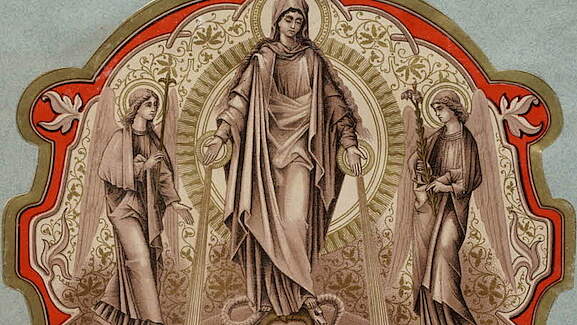
The small town of Ivrea in Piedmont, Italy, is home to a women’s religious community. Inside their convent is a painting of the Madonna with a very interesting past. The image was painted on an oval-shaped board about 30 cm long, and depicts the Immaculate Virgin crushing the head of a snake.
This painting was part of an estate sale held in Turin in the house of a Waldensian* named Albert Pizio, on December 8, 1859. On the day of the sale, friends of Pizio came to look at the furniture. One of them saw the religious art piece and mocked Pizio for having kept it. He seized an ax lying nearby, and swung it at the painting to destroy it. Two strikes failed to make a dent in it. Furious, he hit it again so hard that the ax broke. Still, the painting resisted. Seeing a fire roaring in the fireplace, the madman threw the painting in it. It caught on fire, but only at the edges. The holy image suffered no damage from the flames!
Shortly after, Albert Pizio’s wife, also a member of the Waldensian sect, doused the painting with alcohol and set it on fire. The result was the same: the image of the Immaculate Virgin remained intact.
Finally, Pizio shared his story with a priest, who advised him to bring the painting to the local nuns’ convent. It remained there until 1942, year of the bombing of Turin, when it was transferred to Ivrea. The holy painting continues to be visited and venerated by the faithful today. * The Waldensians were an ascetic, originally Christian, sect, founded by Peter Waldo in Lyon, France, around 1173.
J-P. Osmont in Présence de l'Invisible (Presence of the Invisible)